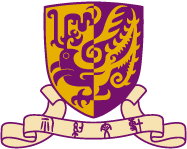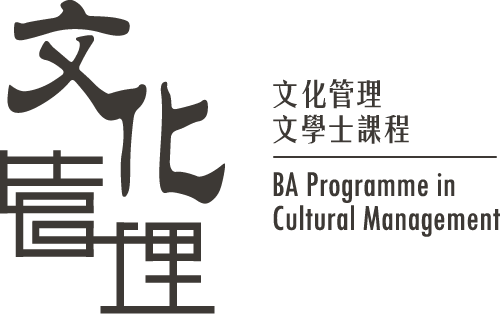The Study of Public & Publicness
The BA programme in Cultural Management, unlike other traditional academic disciplines which have relatively clear histories and theoretical frameworks, is an interdisciplinary programme which combines professional training matching the needs of our society in terms of the strength in public engagement, with enhancement of social awareness including arts, heritage and creative industry in Hong Kong and in the global context. Thus, with the emphasis upon the study of public and publicness as the conceptual base of the learning progress, our students are trained to promote the understanding of various cultural forms, for and with the public, in order to embody the values of cultural diversity in the fast changing Hong Kong society.
In a recent article of Samuel Mateus (2011), we were reminded that the meanings of public “is neither a simple audience constituted by media consumers nor just a rational-critical agency of a Public Sphere” (Mateus 2011: 275), and he suggested that the concept of public “should also be seen in the light of a publicness principle, beyond acritic and manipulative publicity. In accordance, the public may be regarded as the result of the social activities made by individuals sharing symbolic representations and common emotions in publicness” (ibid.). According to Mateus (2011): “Publicness is one of the most present regimes of social experience and contains the proper sense of the word: to publish is the action of making something collective and social” (2011: 279); therefore, “approaching society from a publicness point of view corresponds to recognize the public not as a defined and fixed unit but a dynamic process of publication where people and issues become public as they are published and important to society. The public in not a pre-formed body but a work in progress where countless collective frictions and quarrels acquire an indisputable social relevance and are recognized as such. Thus, the public may be regarded, not as a fragment of the public sphere but as the publicness process all entire, made of small meanings in the empty spaces of social interactions. The public feels and experience together and sustains the public process” (ibid.). In other words, apart from our common sense that “public” is simply a place or a group of general people, Mateus suggested that “public” could not exist without common practice of “publicness.”
Thus, in order to promote and enhance the understanding of the concepts in relation to public and publicness, we would like to start with a small database including a glossary of terms commonly used in the study of public and publicness, and hope that it plays the role of building a common ground of relevant studies of arts, heritage and creative industry in this programme. As this database is planned to be used as a self-learning project on CUMT students’ own initiative, we would encourage students to make use of this and to give us your personal as well as individual feedbacks because only your participation can make it more effective and meaningful.
References:
Mateus, Samuel. 2011. “The public as social experience”. Comunicação e Sociedade 19 (2011): 275-286.Habermas, Jurgen. 1991. The Structural Transformation of the Public Sphere. Cambridge, Massachusetts: MIT Press.
Public (origin)
The Merriam-Webster Dictionary
Oxford English Dictionary B. (n.) 4. c; Etymology.
Public
Definition:
The International Encyclopedia of Communication, 2008, “Public”
Related Articles / Books:
Childs, Harwood Lawrence. 1965. Public Opinion: Nature, Formation, and Role. Princeton, NJ: Princeton University Press.Habermas, Jurgen. 1991. The Structural Transformation of the Public Sphere. Cambridge, Massachusetts: MIT Press.Hannay, Alastair. 2005. On the Public. London; New York: Routledge.Mahony, Nick, Newman, Janet and Barnett, Clive, eds., 2010. Rethinking the Public: Innovations in Research, Theory and Politics. Bristol: Policy.Nieland, Justus. 2008. Feeling Modern: the Eccentricities of Public Life. Urbana: University of Illinois Press.
Publicity
Definition:
Wikipedia, “Publicity”
*See also Encyclopedia of Public Relations, 2013, “publicity”
†Publicity and public education 宣傳與公眾教育, c.f. Public Education
Related Articles / Books:
Black, Gillian. 2011. Publicity Rights and Image: Exploitation and Legal Control. Oxford; Portland, Or.: Hart.Goff, Christine Friesleben. 1989. The Publicity Process. Ames: Iowa State University Press.
Levine, Michael. 2002. Guerrilla P.R. Wired: Waging a Successful Publicity Campaign Online, Offline, and Everywhere in Between. Chicago: McGraw-Hill.
Marconi, Joe. 1999. The Complete Guide to Publicity: Maximize Visibility for Your Product, Service, or Organization. Lincolnwood, Ill.: NTC Business Books.
Publicist
Definition:
Encyclopedia of Public Relations, 2013, “Publicist”
Publicness
Definition:
Oxford English Dictionary, “Publicness”
Related Articles / Books:
Nieland, Justus. 2008. Feeling Modern: the Eccentricities of Public Life. Urbana: University of Illinois Press.
Publics
Definition:
Encyclopedia of Public Relations, 2013, “Publics”
Related Articles / Books:
Livingstone, Sonia M. ed., 2005. Audiences and Publics: When Cultural Engagement Matters for the Public Sphere. Bristol, England; Portland, Or.: Intellect.Meyer, Birgit and Moors, Annelies, eds., 2006. Religion, Media, and the Public Sphere. Bloomington: Indiana University Press.Newman, Janet and Clarke, John. 2009. Publics, Politics and Power: Remaking the Public in Public Services. Los Angeles; London: SAGE.Splichal, Slavko. 2012. Transnationalization of the Public Sphere and the Fate of the Public. New York: Hampton Press.
Journal and Other Resources
Public Culture. Duke University Press. https://www.dukeupress.edu/Public-Culture
Public Culture is IPK’s interdisciplinary quarterly journal of transnational cultural studies.


